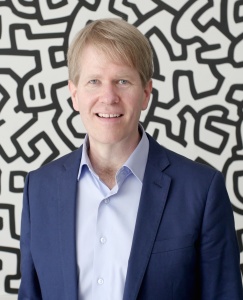Podcast: Download (51.5MB)
Subscribe: RSS

On this episode Kelsey Edwards and Nick Galieti sit down with BYU scholar and professor, Anthony Sweat who wrote a book called The Holy Invitation, published by Deseret Book. This is book and this interview are focused on those going to the temple for the first time prior to their mission, or even those that have gone but are looking to get more out of the experience. This is a great opportunity for missionaries preparing to leave, those on a mission, or even those that are coming home from a mission and looking to get more from their temple experience. Anthony Sweat has some great insights to share on this subject.
This week we are showcasing the music of Sara Lyn Baril. Her music can be found at http://saralynbaril.com Her music is definitely fitting for a missionary friendly music library, which means its also great for music to listen to on the sabbath day or any time you want to feel the peace and contentment of gospel music.


Some thoughts on Sacred Silence with the temple by Nick Galieti (host)
I went back to my journals to see back to my first temple experience on October 11th, 1997, the day before I received my mission call to Baton Rouge, LA. It would appear that two things were at play that informed the journal entry for that day, my obsession with girls and getting a girlfriend, so much so that I didn’t really offer much reflection at all on the mission call itself (yeah, really classy – don’t do what I did), and the fact that I was taught that we aren’t supposed to talk about the temple outside of the temple, so I never wrote anything about the experience, who was there, nothing.
In this episode, we touched on the idea of “sacred silence” in our interview. Its an obviously sensitive subject. There are sacred experiences that we should honor in that spirit. But what are those lines that we shouldn’t cross? I want to forward my own thoughts on this matter in hopes that it can help promote the spirit of the temple as well as help us to understand that the answer is far more ambiguous than we might originally think.
In the episode, I agreed with Anthony Sweat that there is a maximal point where all people engaged in living the covenants of the temple have explicitly agreed to not disclose certain parts of the temple endowment ritual. However, while there are those things that are specifically mentioned there, parts that need to remain sacred, it doesn’t mean that the rest of it remains public domain either. As in all gospel principles, but especially teachings of the temple are best understood line upon line, precept upon precept.
This means that what we talk about with respect to the temple should be viewed in light of who we are speaking with, not just what is “approved” according to covenant. It is common and expected that Missionaries will talk about the plan of salvation when speaking with those being taught about the restored gospel. However, it is doubtful that the best course of action is to discuss the content of the drama depicted in the temples as part of the endowment ritual. Then again, it might be. The spirit should be the guide in these matters.
Remember, it’s not that we hide it, at least no more than God has withheld many truths until we are in a position to best endure the experience that comes with tutoring from the spirit. In speaking of the temple and the sacred truths taught therein, much of what is taught is through the spirit to each individual because that is what that individual is prepared for and ready to learn. Without authorization from the spirit to share such things, it is best to treat such things as valuable for the person receiving it, and not necessarily relevant to the rest of the world.
Temple theologians talk about the temple as being sacred space, in sacred time. They also speak of the nature of temple ritual and learning as being something that should not be made profane. Meaning, something relating or devoted to that which is not sacred or biblical; secular rather than religious. The origin of that word profane, from which we get the word profanity, actually originally meant “outside the temple, or not sacred.” (Side note: To speak profanity isn’t just using certain words that are socially considered vulgar, but to speak in any manner that is unholy.)
In order to keep the temple from becoming secular, something all too common, or profane, it is best to remember that while some of what is taught in the temple is not “off limits” to discuss conceptually and principally, or even out-of-bounds according to covenant in the temple itself, we should be careful to not make profane what is taught and what is learned as it remains in the domain of the sacred and spiritual. Sometimes what we learn in the temple is best understood in the temple context, and outside of that it looses its meaning, especially to someone other than yourself.
So, when you go to the temple for the first time, or when you go to the temple in subsequent visits, don’t be afraid to record those sacred experiences in your personal journal, but seek divine approval for what is appropriate to share and with what audience when it comes to speaking of such sacred things.
You can listen to past episodes at LDSMissionCast.com

